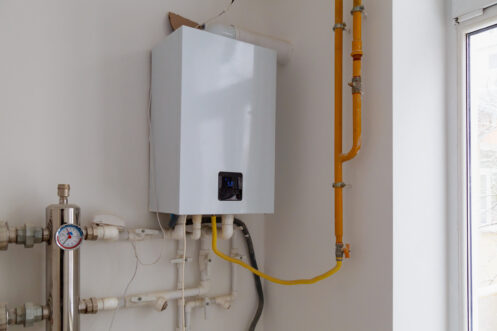The content further down relating to How to Maintain Your Water Heater & Prolong its Life is extremely interesting. Give it a go and draw your own final thoughts.

Warm water is vital for everyday comfort, whether it's for a revitalizing shower or washing dishes. To guarantee your warm water system runs effectively and lasts longer, normal upkeep is crucial. This post gives sensible suggestions and insights on how to preserve your home's hot water system to prevent disturbances and expensive repair work.
Introduction
Keeping your home's warm water system might appear challenging, yet with a couple of easy steps, you can guarantee it runs smoothly for years to find. This guide covers every little thing from comprehending your warm water system to DIY upkeep ideas and knowing when to call in specialist assistance.
Value of Keeping Your Hot Water System
Routine upkeep not only expands the life-span of your warm water system but additionally guarantees it operates effectively. Neglecting maintenance can bring about lowered efficiency, greater power bills, and even early failure of the system.
Indicators Your Hot Water System Demands Maintenance
Understanding when your warm water system needs interest can stop significant concerns. Keep an eye out for signs such as irregular water temperature level, odd noises from the heater, or rustic water.
Recognizing Your Warm Water System
Prior to diving into upkeep jobs, it's valuable to recognize the basic elements of your hot water system. Normally, this consists of the hot water heater itself, pipelines, anode poles, and temperature level controls.
Month-to-month Maintenance Tasks
Regular monthly checks can assist catch minor problems prior to they rise.
Flushing the Hot Water Heater
Flushing your water heater removes sediment buildup, boosting performance and prolonging its life.
Checking and Replacing Anode Rods
Anode poles avoid corrosion inside the tank. Examining and changing them when broken is important.
Checking and Changing Temperature Settings
Adjusting the temperature setups ensures optimal efficiency and safety.
DIY Tips for Maintenance
You can execute numerous upkeep tasks on your own to maintain your hot water system in leading problem.
Checking for Leaks
Consistently evaluate pipelines and connections for leaks, as these can cause water damage and greater costs.
Testing Pressure Alleviation Valves
Testing the stress safety valve guarantees it functions properly and protects against too much pressure build-up.
Protecting Pipes
Insulating hot water pipes lowers warm loss and can conserve energy.
When to Call a Specialist
While do it yourself maintenance is beneficial, some concerns need expert know-how.
Complicated Concerns Calling For Expert Aid
Instances include significant leaks, electric troubles, or if your water heater is regularly underperforming.
Routine Professional Upkeep Benefits
Specialist maintenance can include thorough examinations, tune-ups, and making sure compliance with security criteria.
Conclusion
Normal upkeep of your home's hot water system is important for performance, long life, and expense financial savings. By complying with these tips and recognizing when to seek expert help, you can make sure a dependable supply of hot water without unanticipated disruptions.
Water Heater Maintenance Tips
Test the TPR Valve
Shut off the power and the cold-water supply valve. Place a bucket under the pipe connected to the temperature-pressure-release (TPR) valve on the top or side of the tank. (This valve opens if the tank pressure gets too high.) Lift the valve’s tab to let some water out, then let go. If water keeps flowing, drain the tank partway, unscrew the old valve with a pipe wrench, and install a new one. Check the Anode Rod
Put a hose to the tank’s drain cock and let out a few gallons of water. Now fit a 1 1/16-inch socket onto the rod’s hex head on top of the heater (or under its top plate) and unscrew the rod. If it’s less than ½ inch thick or coated with calcium, buy a new one, wrap its threads with Teflon tape, put it back in the tank, and tighten securely. Use this segmented rod if headroom above the tank is limited. Drain the Tank and Wash Out Sediment
Drain the remaining water in the tank into the bucket, then stir up the sediment on the tank’s bottom by briefly opening the cold-water supply valve. Drain and repeat until clean water comes out of the hose. Close the drain cock, refill the tank, and turn its power back on. Adjust the Temperature
Find the temperature dial on the side of the tank and unscrew its cover. Adjust the dial to 120 degrees using a flathead screwdriver. For every 10 degrees the temperature is lowered, you can expect to save up to 5 percent in energy costs. Turn the water heater off or the thermostat down to its lowest setting if you plan to be away from home for more than three days. Insulate the Pipes
Buy some self-sticking 3/8-inch-thick foam pipe insulation that matches the pipes’ diameter. Slide the foam over the hot-and cold-water pipes as far as you can reach. Insulating the cold-water pipe prevents condensation in summer. Peel the tape and squeeze the insulation closed. If the pipe is 6 inches or less from the flue, cover it with 1-inch-thick unfaced fiberglass pipe wrap. https://www.thisoldhouse.com/plumbing/21016402/how-to-maintain-a-water-heater
:max_bytes(150000):strip_icc()/tankless-hot-water-system-in-the-basement-of-a-green-technology-home-529577258-77afda16fd494c6899a78000888c3204.jpg)
As a serious person who reads about Tips For Maintaining Your Hot Water Heater, I assumed sharing that article post was worthwhile. So long as you enjoyed reading our post kindly don't forget to pass it around. I truly appreciate reading our article about How to Maintain a Hot Water Heater in a Few Simple Steps.
Book Appointment